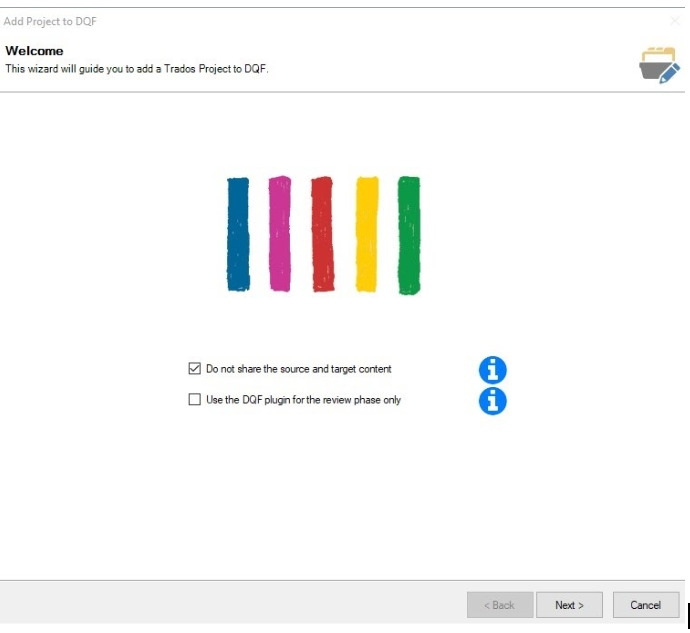DQF Introduces Metadata-Only Option in SDL Trados Studio

It's now possible for DQF users on SDL Trados Studio to send metadata-only and still be able to generate detailed quality evaluation reports on the DQF Dashboard.
More flexibility with the DQF plugin for SDL Trados Studio
Now the DQF plugin allows Trados Studio users to track and measure the productivity and quality data even when working with confidential and sensitive assignments, as the source and target content won’t get submitted to the DQF database.
Is my data safe with DQF?
We created the metadata-only option for companies that process sensitive and confidential content that they are not allowed to share with third parties. It is not to say that the regular plugin where the source and target content are collected is not safe - it is meant only to accommodate specific scenarios where stricter content handling agreements are in place.
You are always in full control of the plugin activity. You can choose for which projects you wish to enable the plugin, for example, when testing out a new machine translation engine or recruiting new vendors. The plugin does not perform any tracking without the user's consent.
How can I use the metadata-only option in Trados Studio?
Upon opening the DQF project creation wizard, select the checkbox for “Do not share the source and target content”.

If you select this option, the calculations required to feed the reports on the DQF Dashboard are carried out by the plugin locally. The content source and target segments won’t get submitted to the DQF database. The data points that will get submitted are: user name, CAT tool name, source, and target language, segment origin, MT engine type, TM match rate, word count and character count of source and target segments, edit distance, time spent on translation, as well as user input data, such as DQF project and review settings.
Why does TAUS collect source and target content?
Collecting the bilingual content along with its metadata enables us to provide DQF users with rich project analytics. They can not only get access to project reports on the DQF Dashboard but also download detailed segment-level reports that show such metrics as absolute edit distance, normalized edit distance and time spent for each segment. It allows users to carry out detailed project analysis, which is more difficult if the content of the source and target segments is not readily accessible in the same report.
What kind of reporting will I have access to using the metadata-only option in the DQF plugin?
Most of the reporting will remain the same: you will have access to project reports, trend and benchmark reports. The only difference is that when the metadata-only option has been selected for the project, the downloadable segment level report will not contain the source and target segments. These columns will remain empty, while the rest of the details will still be there, e.g. vendor name, segment origin, time spent and other details.
Download the DQF Plugin for SDL Trados Studio
For a full demo of the new plugin features, please watch the webinar recording. For any follow-up questions, please contact the DQF team at dqf@taus.net.

Dace is a product and operations management professional with 15+ years of experience in the localization industry. Over the past 7 years, she has taken on various roles at TAUS ranging from account management to product and operations management. Since 2020 she is a member of the Executive Team and leads the strategic planning and business operations of a team of 20+ employees. She holds a Bachelor’s degree in Translation and Interpreting and a Master’s degree in Social and Cultural Anthropology.
 by Milica Panić
by Milica Panić by Dace Dzeguze
by Dace Dzeguze by Milica Panić
by Milica Panić

